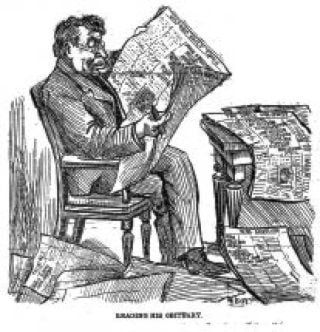The West Kootenay is filled with historical quirks, geographical curiosities, and fascinating footnotes. Who better to present these lists than our own reporter Greg Nesteroff, who has a long list of, well, lists.
We’re pleased to introduce this new regular feature that will present knowledge you never thought you would need but will somehow be better off knowing.
We start with a group of five who had the unnerving experience of reading their own obituaries ...
John Houston
Nelson’s founding mayor was twice considered gone before his time. In 1906, a rumor circulated that he had been killed in Nevada, but it proved to be mistaken identity.
Four years later, Houston literally read his own obituary in the Vancouver Province while ailing from pneumonia.
He reportedly asked that the paper not bother with a correction, as he planned to make good on the story. He died in Quesnel days later and was brought back to Nelson for the largest funeral the city had ever seen.
John Sandon
The namesake of the Slocan Valley ghost town was reported lost on Kootenay Lake in 1890 when his boat and hat were found floating after a storm. Shortly thereafter, two bodies were recovered from the lake, and it was believed Sandon’s was among them.
Yet he reappeared days later, vigorously denying his death. He said he wasn’t “fool enough to get into water that he couldn’t wade through to shore, should he be upset.”
The incident eerily presaged his actual passing in 1893, when he left his ranch for Ainsworth along with Kenneth McLeod. Their overturned boat was found on the lake, and they were presumed drowned.
However, the Kaslo Slocan Examiner wrote, “no one knows that John Sandown [sic] really met his death from drowning or that he is really dead at all.”
His mother and siblings suspected foul play, disputing a will that left his ranch to a hired man named Joseph Hetherington.
Eli Carpenter
The circus tightrope-walker turned prospector, who helped start the Silvery Slocan rush by discovering the Payne mine, departed for the Klondike in the fall of 1897 with Peter McNichol. When nothing was heard from them for close to a year, he was given up for dead.
However, Carpenter was soon reported alive and well, and “expected to turn up in the spring with either news of another big strike or with a large bundle of the finest furs.”
Still, it had been a harrowing journey. He arrived alone in Dawson “nearly starving and almost naked,” and considered the journey his greatest achievement. Friends said that given matches and a small sack of salt, he could stay in the mountains for months. Carpenter died for real in 1917 at Annis, near Salmon Arm, where he was a watchman for a lumber company. Some history books, however, still say he perished en route to the Yukon.
Carpenter Creek, which runs through Sandon and New Denver, is named for him.
Fred Starkey
As Nelson-based commissioner of the Associated Boards of Trade of Eastern British Columbia, Starkey kept a mini-museum in his office, including artifacts such as Eli Carpenter’s pick and shovel (which alas, have long since disappeared).
Like Carpenter, he was wrongly believed to have checked out on his way to the Klondike. Starkey left England for Canada at 16 and wrote his sister from Winnipeg that he was joining the gold rush. However, he lost touch with his family, who then read someone of the same name had died in the region. They took his silence as confirmation.
As Walter McRaye recounted in Town Hall Tonight, after rambling around the west for years and finally settling in Nelson, Starkey returned home for a visit. He showed up on the doorstep of his brother John, who didn’t recognize him.
“I’m Fred,” he said. John replied: “What — our Fred? Oh no, you’re not. He’s dead.”
Fred strode into the house and rattled off family names until his shaken sibling conceded he was still alive. Starkey died in Nelson in 1931.
Ray Brandon
The manager of the Jeanne Russell Co., a travelling theatrical troupe, Brandon gave movie star Boris Karloff his first acting job in 1911.
(Karloff actually misremembered his stage debut as occurring in Nelson; while he performed here twice, including on his 24th birthday, his first show was probably in Vernon or Salmon Arm.)
In October 1912, a report appeared in a Colville newspaper that Brandon had died in Nelson. Where this notion originated is unclear. There’s nothing to suggest he was even here then, much less involved in anything fatal.
Passing through Colville a few months later, Brandon stopped at the newspaper office to read the account of his demise. He remarked: “I will send this notice to some of my creditors, which will save me the embarrassment of receiving statements from them.”
Brandon was killed in a car accident in Oregon in 1933.
